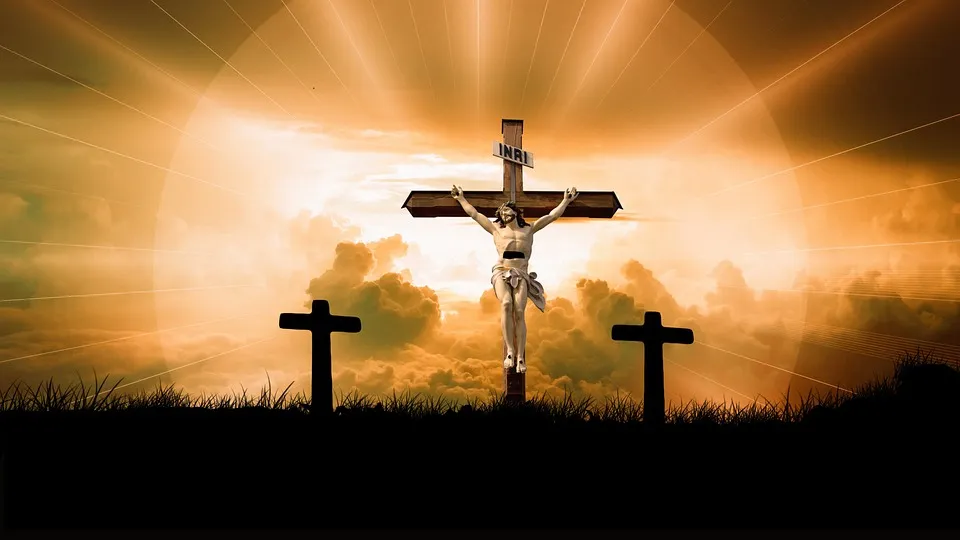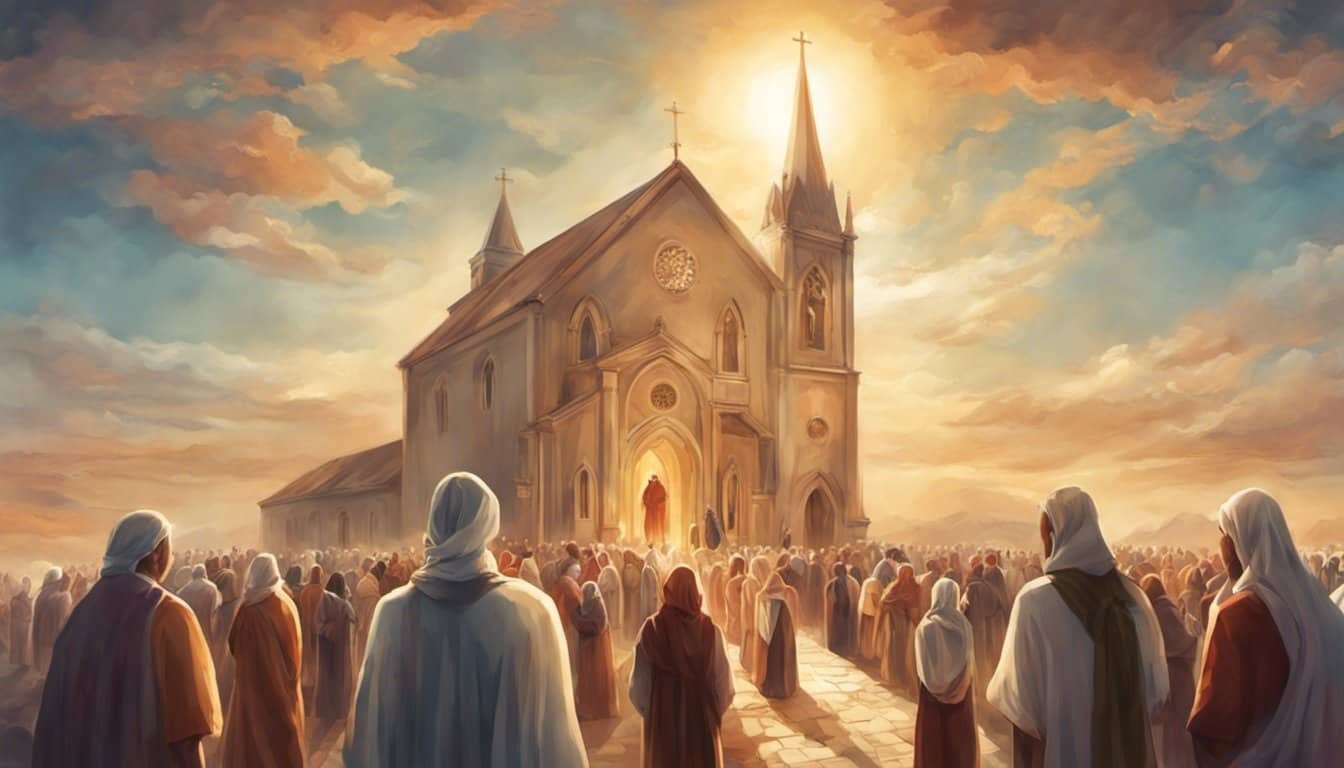The crucifixion of Jesus is universally recognized as one of the most pivotal events in Christian history. However, the exact day of crucifixion is still a subject of debate among theologians and historians. This post analyzes this mysterious topic by delving into religious practices, historical context, and different interpretations of Jesus’ crucifixion. Keep reading to find out if the date of Jesus’ crucifixion can ever truly be known.
Introduction: The Significance of Jesus’ Crucifixion
As a person interested in Christianity, you may have wondered about the significance of Jesus’ crucifixion. The crucifixion of Jesus is arguably the most important event in Christian history and serves as a cornerstone of the faith. It represents the ultimate sacrifice made by Jesus to pay for the sins of humanity, and it is through this sacrifice that Christians believe in salvation and eternal life.

The crucifixion of Jesus is celebrated each year during Holy Week, with Good Friday marking the day of his death on the cross. The events leading up to the crucifixion, including the Last Supper and the betrayal of Judas, are also commemorated during this time. The story of Jesus’ crucifixion and resurrection is told in each of the four gospels, providing varying accounts of the events leading up to and after the crucifixion.
Understanding the significance behind Jesus’ crucifixion requires a closer look at the historical and religious context surrounding this event. This includes examining the different theories about the date of the crucifixion, understanding the political and religious practices of the Roman Empire and Jewish traditions, and delving into the theological debates about the interpretation of the crucifixion.

To fully appreciate the importance of Jesus’ sacrifice on the cross, it is essential to understand the cultural and historical context behind the events leading up to his crucifixion. In the following sections, we will explore the theoretical dates of Jesus’ crucifixion, clues in the Bible about the day of the crucifixion, the historical context of crucifixion methods and Roman practices, religious practices during Passover and Jewish traditions, and the theological debate surrounding the interpretation of the crucifixion. By the end of this article, we hope to give you a deeper understanding of the significance of Jesus’ crucifixion in the context of both biblical history and religious traditions.
Let’s dive into the complexity of the mystery behind the day of Jesus’ crucifixion.
- Theoretical Dates of Jesus’ Crucifixion
- Clues in the Bible About the Day of Crucifixion
- Historical Context: Crucifixion Methods and Roman Practices
- Religious Practices: Passover and Jewish Traditions
- Theological Debate: Different Interpretations of Crucifixion
Theoretical Dates of Jesus’ Crucifixion
There has been much theological and scholarly debate over the exact date that Jesus was crucified. While certain details about the events leading up to the crucifixion are widely accepted by biblical scholars and different religious traditions, the specific date of the crucifixion remains a mystery.
One theory suggests that Jesus was crucified on April 3, 33 A.D. This theory is based on a combination of historical and biblical evidence, including the writings of early Church fathers, the Gospel accounts of the crucifixion, and astronomical data that was recorded during that time period.
Another theory, however, suggests that Jesus was crucified on April 7, 30 A.D. This theory is based on a different interpretation of the Gospel accounts and other historical evidence surrounding the reign of Pontius Pilate, the Roman governor of Judea at the time of Jesus’ crucifixion.
Despite these theories, there is no definitive answer to the question of when Jesus was crucified. The exact date remains one of the great mysteries of biblical history and the subject of ongoing scholarly debate.
What is clear from the biblical accounts, however, is the profound significance of Jesus’ crucifixion for Christianity. The event is remembered and celebrated every year during Holy Week, culminating in the celebration of Easter Sunday.
Understanding the historical and theological context surrounding Jesus’ crucifixion can deepen one’s appreciation for the significance of this event. From the Roman practices and Jewish traditions that shaped the crucifixion, to the theological debates that continue to shape the Christian faith today, there is much to learn and reflect on.
As we continue to study the biblical accounts and learn from the insights of scholars and theologians, we can deepen our understanding of the mystery behind the day of Jesus’ crucifixion. Whatever our views on the specific date, we can all share in the hope and joy of the resurrection, and the promise of salvation that Jesus’ sacrifice on the cross represents.
Clues in the Bible About the Day of Crucifixion

As you delve into the historical events surrounding Jesus’ crucifixion, you may wonder about the specific day when it took place. While there is a theological debate about the exact date, there are some clues in the Bible that can help us narrow down the possibilities. Here are some of the clues:
The Last Supper: The night before Jesus’ crucifixion, he had the Last Supper with his disciples. According to the Gospel of Matthew, Mark, and Luke, this supper was held on the first day of the Feast of Unleavened Bread, also known as Passover (Matthew 26:17-20, Mark 14:12-17, Luke 22:7-15). This gives us a starting point for our investigation.
The Preparation Day: According to the Gospel of John, Jesus was crucified on the day before the Sabbath (John 19:31). This day is referred to as the “Preparation Day” because it was the day when Jews prepared for the Sabbath by doing things like buying food or burying the dead. Since the Sabbath was on Saturday, the Preparation Day must have been on a Friday.
The Resurrection Day: All four Gospels agree that Jesus rose from the dead on the third day after his crucifixion (Matthew 28:1-10, Mark 16:1-8, Luke 24:1-12, John 20:1-18). Since the Resurrection Day was on a Sunday, this means that Jesus must have been crucified on a Friday.
The Day of Passover: Some scholars believe that Jesus was crucified on the day of Passover itself, which would mean that the Last Supper was not a Passover meal as traditionally believed. However, this interpretation is hotly debated among biblical scholars and there is no clear consensus.
While these clues can help us narrow down the possibilities, there is still some uncertainty about the exact day of Jesus’ crucifixion. However, what is important is not the specific date but rather the significance of the event itself. The crucifixion of Jesus is central to the Christian faith and represents a sacrifice for the sins of humanity. As we reflect on the events of Holy Week and Easter, let us remember the importance of this event and its ultimate significance for our salvation and faith.
Historical Context: Crucifixion Methods and Roman Practices
To understand the day of Jesus’ crucifixion, it’s important to look at the historical context in which it occurred. During the Roman Empire, crucifixion was a common method of execution for criminals. This form of punishment was brutal and meant to serve as a warning to others who may have been considering committing crimes.
During a crucifixion, the condemned person was usually stripped naked and then nailed or tied to a wooden cross. The process was excruciatingly painful and could last for several hours or even days. Death came from either suffocation or shock. The person’s legs were often broken to hasten death.
The Romans were known for their cruel treatment of criminals, but they also had a system in place to ensure that the punishment fit the crime. Crucifixion was reserved for the worst offenses, such as treason, rebellion, and murder.
Knowing this historical context helps us understand the tragedy of Jesus’ crucifixion. He was executed by the Romans as a criminal, but he was innocent of any crime. He was a religious leader who preached love and compassion, and yet he was put to death in the most brutal manner possible.
As we think about the historical context of Jesus’ crucifixion, it’s also important to remember that the events of Holy Week coincide with the Jewish holiday of Passover. Passover commemorates the Israelites’ liberation from slavery in Egypt. It’s a time of celebration and remembrance for the Jewish people.
The timing of Jesus’ death during Passover adds another layer of significance to the story. Some scholars believe that Jesus intentionally chose to enter Jerusalem and make a public statement during this time because of its historical and religious significance.
Understanding the historical context of Jesus’ crucifixion helps us appreciate the sacrifice that he made on our behalf. It also reminds us that the events of Holy Week and Easter are not just religious traditions, but also historical events that have shaped the course of human history. As we continue to reflect on the significance of Jesus’ death and resurrection, may our faith grow stronger and our gratitude deeper.
Religious Practices: Passover and Jewish Traditions

Passover is the festival of freedom in Jewish traditions, commemorating the liberation of Israelites from Egyptian slavery. It is celebrated at the start of spring and coincides with the crucifixion of Jesus. Jesus and his disciples were Jews, and they were celebrating the Passover meal (or the Last Supper) when Jesus was arrested. This historical context has led biblical scholars and theologians to look into the significance of Passover and the Last Supper in understanding the day of Jesus’ crucifixion. Here are some key religious practices and Jewish traditions related to the Passover that help shed some light on this mystery:
The Passover Sacrifice: During the Passover meal, the Jews offered a sacrifice to God to remember their liberation from Egypt. The Passover lamb was sacrificed and eaten as a family. The blood of the lamb was painted on the doorpost to signal to God that this was a house of Israelites who should be spared from the final plague that killed the firstborn of Egyptians. This tradition of sacrifice and blood links to the theological debate about whether Jesus’ death was a substitutionary sacrifice that atoned for the sins of humanity.
The Unleavened Bread: During Passover, Jews eat unleavened bread (matzah) to symbolize the haste with which they left Egypt and the lack of time to let the dough rise. The bread is also a reminder of the bread that did not have time to rise during their flight from Egypt that was baked in the form of matzah. This tradition links to the Last Supper when Jesus broke the bread and declared it his body. This act of sacrificing his body for our salvation is central to Christian beliefs.
The Passover Seder: The Passover Seder is a ritual meal held on the first two nights of the holiday. The Seder is an ordered service with symbolic foods, prayers, and readings from the Haggadah (telling the story of the Exodus). The Seder includes the Four Questions, which are asked by the youngest child, highlighting the importance of family and passing on traditions. Understanding the order of the Seder and the ways in which the meal is celebrated can give us a fuller appreciation of the Last Supper that Jesus shared with his disciples.
The Calendar: Passover falls on the 14th day of Nisan, the Jewish calendar month that corresponds roughly to March or April. However, the Jewish and Christian calendars are not the same, and the days of the week do not line up. This difference in calendars has led to some debate about whether Jesus was crucified on a Friday (which is the common belief) or a Wednesday or Thursday.
By understanding the religious practices and traditions surrounding the Passover, we can begin to appreciate the rich history and meaning behind the crucifixion of Jesus. The connection with the Last Supper, the theological debate about substitutionary sacrifice, and the importance of family and tradition all add depth to this pivotal event in Christian history.
Theological Debate: Different Interpretations of Crucifixion
The crucifixion of Jesus Christ is a pivotal event in Christian history. Despite its importance, there is still a theological debate among scholars and religious leaders on what exactly took place during those fateful hours. The different interpretations of Jesus’ crucifixion often hinge on varying interpretations of the Bible and theological principles.
One interpretation is the substitutionary view, which states that Jesus’ death was a way for him to take the punishment for the sins of humanity and reconcile them with God. This view is based on several passages from the Bible, including Isaiah 53:5-6 and 2 Corinthians 5:21. Proponents of this view also point to the Last Supper, where Jesus called his blood “a covenant, which is poured out for many for the forgiveness of sins” (Matthew 26:28).
Another interpretation is the moral influence view, which emphasizes the impact that Jesus’ death had on humanity as a model for moral living. This interpretation is based on the idea that Jesus’ teachings and life were an example for people to follow, and his death was a way to show that he was willing to die for his beliefs.

There are also those who hold to the ransom theory, which suggests that Jesus’ death was a way to pay a ransom to Satan to free humanity from bondage to sin. This view is based on several passages from the Bible, including Mark 10:45 and 1 Timothy 2:6.
Despite these differences in interpretation, what is clear is that Jesus’ crucifixion has been interpreted in many different ways throughout history. This theological debate shows that different people can read the same text and come to different conclusions based on their own theological principles and beliefs.
As we approach Easter and commemorate Holy Week, it is important to remember the significance of Jesus’ sacrifice on the cross, regardless of the interpretation we may hold. This event is not only a significant historical event but also a moment of faith and redemption for Christians around the world. Understanding the theological debate around Jesus’ crucifixion can deepen our appreciation for this event and help us grow in our faith.
Conclusion: The Importance of Understanding Jesus’ Crucifixion
In conclusion, studying and understanding the day of Jesus’ crucifixion is of great importance to Christians and those interested in biblical history. The events surrounding the crucifixion and resurrection are central to the entire Christian faith, with Easter being the most important holiday in the Christian calendar.
By examining the Bible and historical context, we can gain a deeper understanding of the significance of Jesus’ crucifixion. We can learn about the different theological interpretations of the crucifixion and why it is considered the ultimate act of sacrifice and redemption.

Additionally, studying the day of Jesus’ crucifixion can help deepen our appreciation for the religious and cultural traditions surrounding Easter and Holy Week. By understanding the significance of Passover and Jewish customs, we can better appreciate the meaning behind the Last Supper and the events leading up to Jesus’ crucifixion.
Moreover, understanding the historical context of the Roman Empire and the crucifixion methods used during that time period can provide valuable insights into the events of Jesus’ crucifixion and the biblical accounts of his death and resurrection.
Overall, by studying and understanding the day of Jesus’ crucifixion, we can gain a greater appreciation and understanding of the central events of the Christian faith and the sacrifice Jesus made for our salvation. It is a topic that should be explored by anyone interested in theological debate, religious traditions, and historical events.














